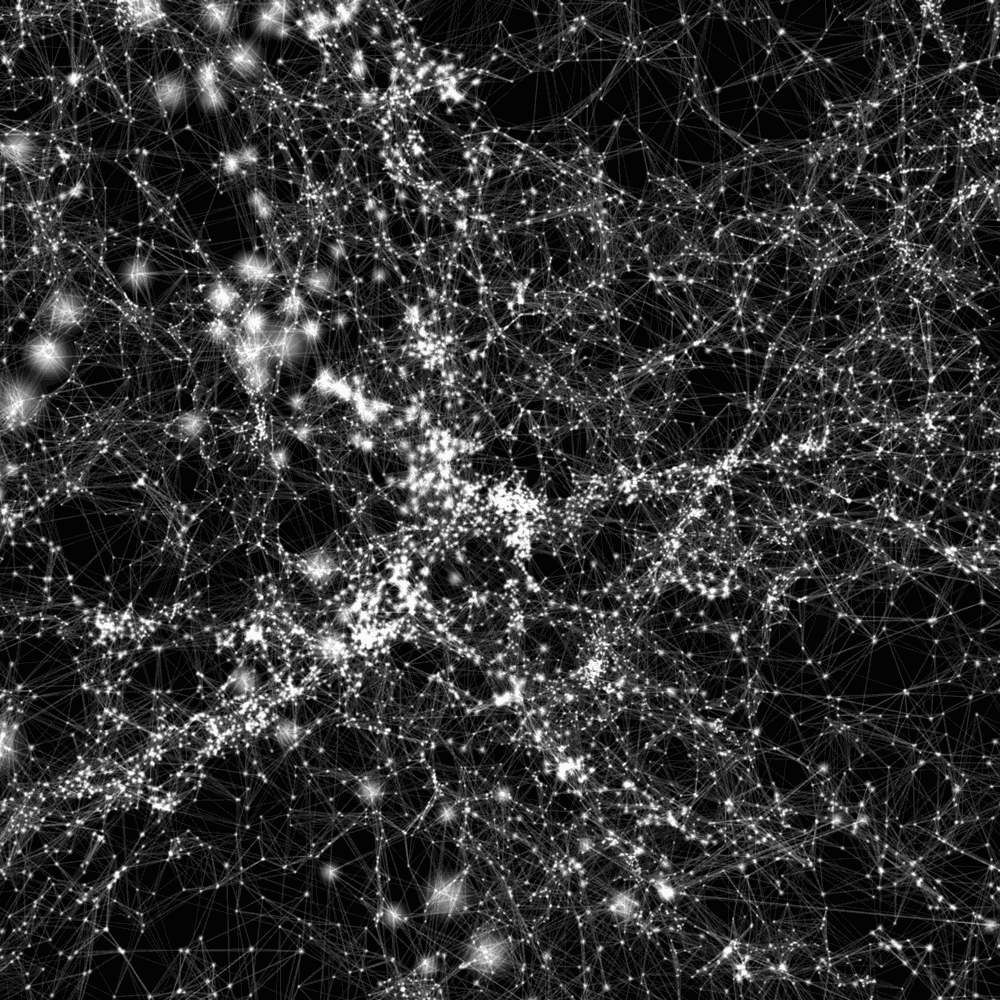Event
In the Networks of the Universe | With Patrizia Caraveo
BarabásiLab‘s The Art of Connection exhibition continues, focusing on the visualization of networks and nodes characteristic of the complex phenomena of our lives. For Milan Art Week, the exhibition is enriched with one more work from BarabásiLab: Cosmic Web.
created by Kim Albrecht, the lab’s designer, worked with a team of network scientists and cosmologists to generate a series of images and videos showing the overwhelming complexity of the Universe
On April 12, Patrizia Caraveo, Research Director at the National Institute of Astrophysics. for the Understanding the Invisible series, will guide us through the discovery of Cosmic Web in the talk In the Networks of the Universe that will help us imagine the cosmic web, giving us insight into the fundamental structure of the universe.
“When we look around, phone friends, consult an Internet site, we are making connections with the reality around us. To try to visualize these connections, let’s imagine a line connecting two points, for example, two people making phone calls to each other. If we want to map the phone calls we have made, the line becomes a spoke structure where each spoke connects us with each person we have contacted. We have become the node of a network. At this point we can decide that the length of the connecting line is proportional to the distance between us and our callers. Imagine we repeat the exercise for all the people we have contacted and then extend it to all the people who live in a neighborhood, or in a city. Each one will be at the center of a more or less rich ray, depending on the number of calls made. Those with distant relatives or friends will have much longer connection lines. We have built a network with interconnected nodes that move because each of us moves throughout the day, and it is recorded by our cell phones. Our network comes alive, and if we repeat the exercise one day after another, we realize that most of us follow predictable paths. We see this by looking at the moving nodes that always follow the same path. By visualizing data about phone usage by a community, we built a pattern of connections that has predictive value, so it can be used for sociological studies, but it can also have aesthetic value, especially using 3D visualizations.
Network theory can be used as the basis of countless scientific studies. The spread of a disease or fake news follows the same node structure that expands through ever new connections. It is extraordinary how pervasive this view can be and how the sometimes wonderfully complicated representations of networks can have its own profound beauty. That is the message of The Art of Connection exhibition set up at MEET to offer a glimpse of the creations of BarabásiLab, the network theory research center that produces these extraordinary visions. On April 12, the material on display will be joined by the installation Cosmic Web, a 3-D vision of the visible and invisible matter that connects the galaxies of our Universe.”
Patrizia Caraveo

It will be Patrizia Caraveo herself – Research Director at the National Institute of Astrophysics (INAF) – who will present the new installation during Milan Art Week.
For her contributions to the understanding of the high-energy emission of neutron stars, Caraveo received the National President of the Republic Award in 2009 and, in 2021, the Enrico Fermi Award of the Italian Physical Society. In 2017 she was appointed Commendatore dell’Ordine al Merito della Repubblica Italiana. She is a member of the 2003 Group for Scientific Research and 100 Women Against Stereotypes.
We know that we are minority partners in a Universe dominated by matter and energy that do not emit measurable radiation, hence dark. We know little about either, except that we can weigh dark matter because we measure its gravitational action. While we cannot see it, by studying the distribution of galaxies we can understand how this dark presence dominates the cosmic web.
Patrizia Caraveo
